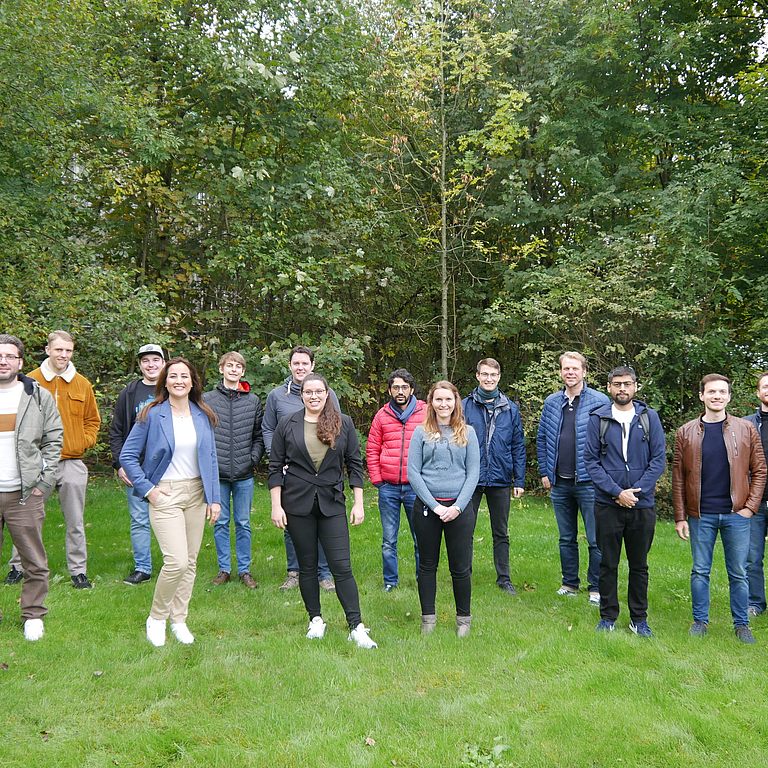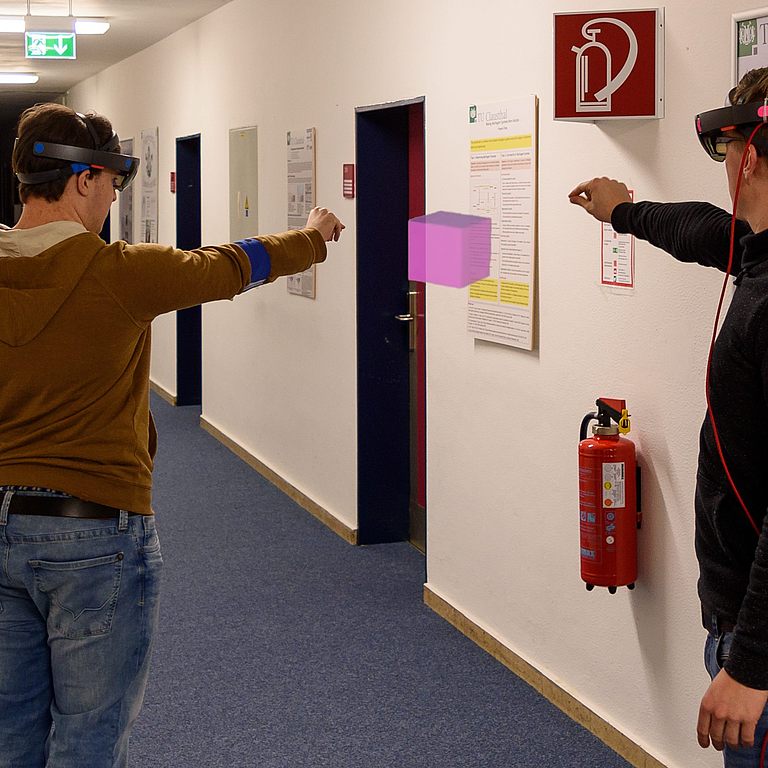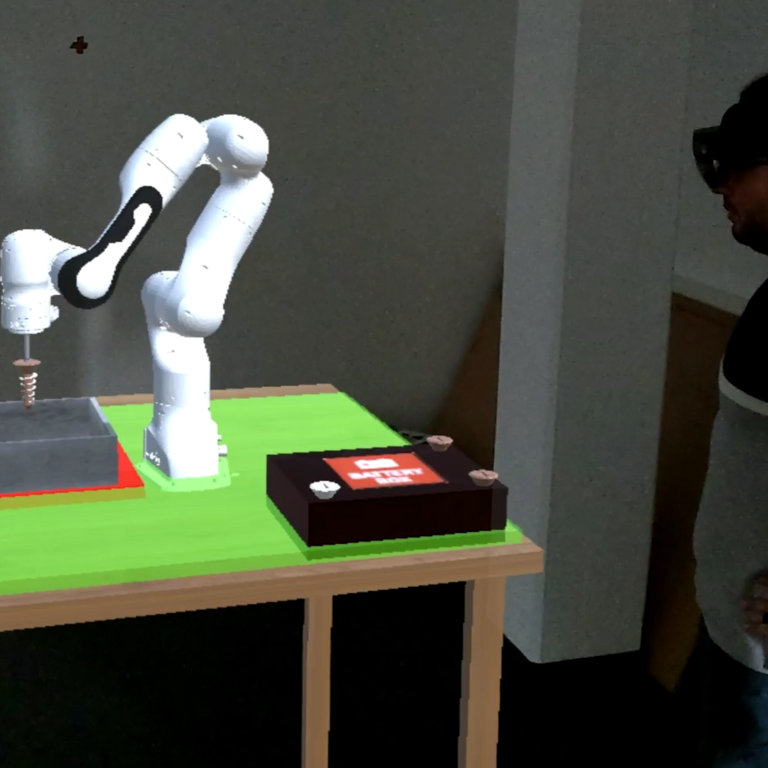ARBAY
Imagine you need a new shelf for your living room. You decide to visit a furniture store close by to look around what they got to offer. After a little while you ask someone to help you out. The salesman is suggesting to you a nice and good looking shelf. Because you can't really imagine what it would look like in your living room he offers you to rent a pair of augmented reality glasses. At home you put them on and a chatbot is walking you through all your available options. Similar to a digital salesman it shows you various configurations of the shelf. If you got more complicated questions you can also contact an actual salesman of the furniture store with your reality glasses. That person is then able to give you more specific information and ideas on how you could configure your personal shelf and where to put it. If you already feel comfortable purchasing your selection you can do that using the reality glasses. If not you can visit the store again and load your scanned living room into a showroom which is projecting your actual room onto blank walls. In this room you can take the display model and move it around to find the perfect positioning.
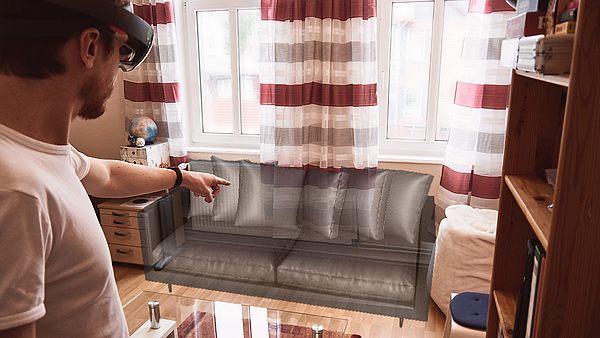
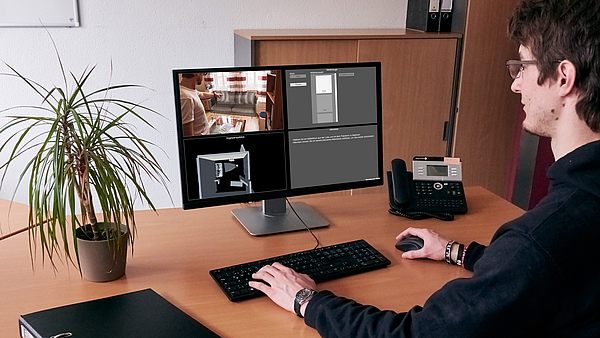
Based on this setting the project partners of ARBay want to develop a system and prototype to help in similar situations. It should also be able to incorporate various other fields in the future. As of now the consultation and sales process of goods like furniture is not integrated in the online market. These goods are most of the time pricy and have a lot of different configurations which makes an integration difficult. Other people and projects already work on displaying and interacting with those objects but for us especially the interaction between a salesman and a customer and its support through technology is important. Trying to solve this problem only we focus on augmented reality technologies. We at HCIS how the interaction and cooperation between multiple people works and how it can be supported. Besides our general research area we want to have a good look at following research questions:
- Which properties are important or helpful for such a supporting system?
- How are customers and salesman communicating with each other? How can this kind of communication be intuitively used?
- In which way is it different if the salesman is not present and can only communicate via the augmented reality glasses?
- How can user reference objects, positions and configurations in the real and virtual world?
- Which information and configuration options are needed during the different processes? Which of those does a salesman need? Which one would be overwhelming a customer?
- Which other problems or synergies could appear?
We at HCIS will be investigating these and other questions during the project. First off, HCIS will be observing the actual processes at tejo's (one of the project partners) furniture store. There we will be accompany salesmen and document our observations. The experiences of customers and salesmen during those processes are also quite relevant in gaining a good understanding about the topic. They are the baseline to develop a realistic process and can be reused when designing the user interface of the supporting system.
On top of that HCIS will be publishing all of the results and conclusions to help optimize communication processes.
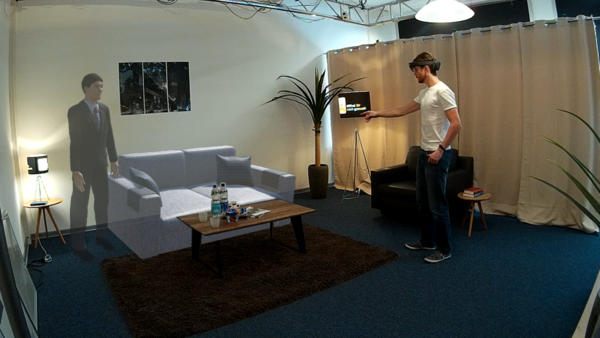
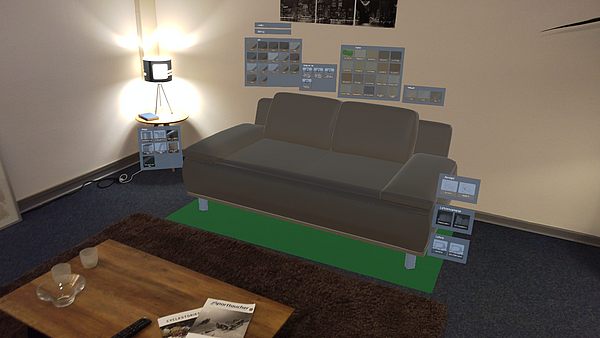
The project ARBAY started in September 2018 and wants to bring the consultation and configuration of highly customizable goods (f.e. furniture) into your living room. Supported by virtual and augmented reality technologies a prototype will be developed and implemented. Combining automated chatbots and real salesmen we want to create digital distribution channels. Guided by a chatbot customers will be able to select favorites and be advised by salesmen. To accomplish this, current sales platforms need to be extended. The final system will be tested and used in the furniture industry. Moreover, the concept will be developed in a way that it can be easily adjusted and used for other industry.
Sponsored by the Federal Ministry of Education and Research we work closely with different project partners to cover all important areas of expertise.

In multiple iterations over the span of three years will the initial situation be analysed, prototypes be tested and a final pilot application be developed.
During the project HCIS is mainly working on the following work package:
Cooperative 2,5D/3D AR-environment for consulting, configuration and sales talk / HMI
Based on current visualization and interaction concepts we need to develop and implement new processes to support the interaction between salesmen and customers. We will be observing and analyzing the routines of salesmen to create and refine an AR design which enables a smooth interaction. Regarding the user interface and the visible information we have to watch out for the potential differences between salesmen and customers. While salesmen can be extensively taught on how to use the system a customer needs to be able to almost use it intuitively.
HCIS is also managing and supervising the project.
Publications:
Blunk, O., Brown, G., Osmers, N. & Prilla, M. (2020). Potentials of AR technology for the digitalization of consultancy intensive sales processes on the example of furniture sales. Entwicklungen, Chancen und Herausforderungen der Digitalisierung., 57–72. Postdam: GITO Verlag. https://doi.org/10.30844/wi_2020_t1-blunk
Blunk O, Brown G, Prilla M (2020) Möglichkeiten der Digitalisierung zur Beratung von hochkonfigurierbaren und hochindividualisierbaren Gütern. HMD Prax Wirtsch. https://doi.org/10.1365/s40702-020-00630-x
Kahrl, N., Prilla, M., & Blunk, O. (2020). Show me your Living Room: Investigating the Role of Representing User Environments in AR Remote Consultations. Proceedings of Mensch Und Computer 2020, 11. https://doi.org/10.1145/3404983.3405520
Brown, G. & Prilla, M., “The effects of consultant avatar size and dynamics on customer trust in online consultations,” in Proceedings of the Conference on Mensch und Computer, New York, NY, USA: Association for Computing Machinery, 2020, pp. 239–249. https://doi.org/10.1145/3404983.3405591
Brown, G. & Prilla, M. (2019). Evaluating Pointing Modes and Frames of Reference for Remotely Supporting an Augmented Reality User in a Collaborative (Virtual) Environment. Mensch & Computer 2019.
Contact
Michael Prilla, Oliver Blunk, Gordon Brown
You can find additional information about the project on www.arbay-projekt.de
